Journal list menu
Export Citations
Download PDFs
Cover Image
Cover Image: Volume 23 Number 10, October 2020
- Page: i
- First Published: 23 September 2020
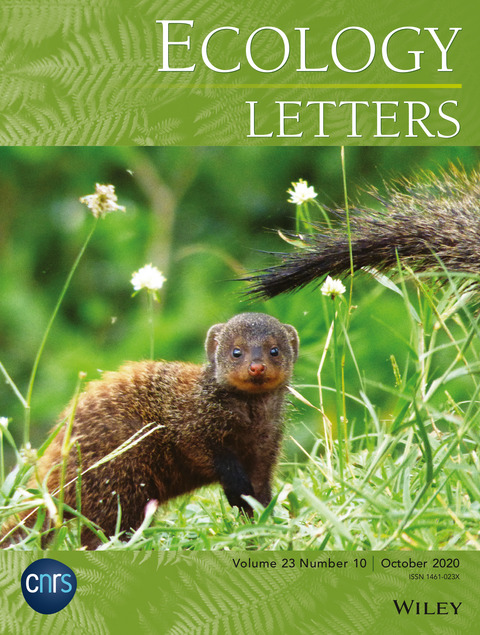
The cover image is based on the Letters Inbreeding depresses altruism in a cooperative society by David A. Wells et al., https://doi.org/10.1111/ele.13578.
Photo Credit: Hazel Nichols
Issue Information
Letters
The relative importance of plasticity versus genetic differentiation in explaining between population differences; a meta-analysis
- Pages: 1432-1441
- First Published: 12 July 2020
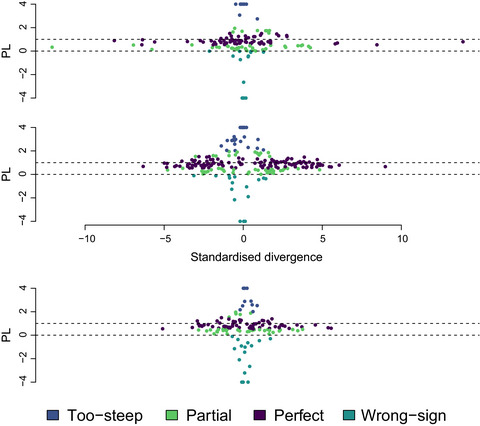
Plasticity is twice as important as genetic differentiation at explaining phenotypic divergence between populations. 40% of traits exhibit counter-gradient variation, where plasticity-induced changes in phenotype are opposite in sign to genetic differentiation. GXE interactions are small in magnitude compare to the main effects of E.
Reducing dispersal limitation via seed addition increases species richness but not above-ground biomass
- Pages: 1442-1450
- First Published: 21 June 2020
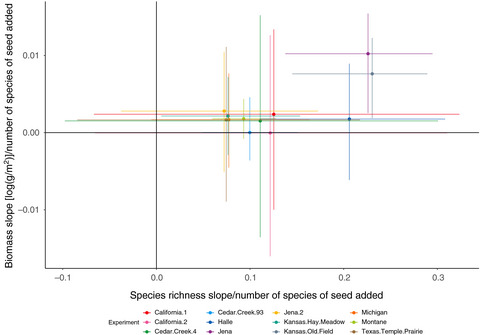
In a synthesis of seed addition experiments across a gradient of seeded richness, for every 10 species of seed added, species richness increased by about two species. However, the increase in species richness by overcoming seed limitation did not lead to a concomitant increase in above-ground biomass production. This highlights the need to consider the relationship between biodiversity and ecosystem functioning in a pluralistic way that considers both the processes that shape diversity and productivity simultaneously in naturally assembled communities.
Spatial resolution and location impact group structure in a marine food web
- Pages: 1451-1459
- First Published: 12 July 2020
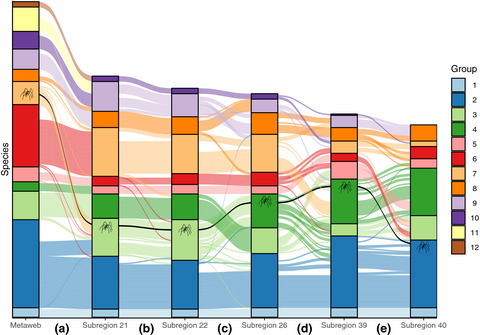
Using community detection to identify groups of species sharing a similar set of interactions we compare how the group structure differs between the metaweb and its constituent subregions in a marine food web. The metaweb differs substantially from its subregions, and subregions often differ from each other, even when differences in species composition are minor. We argue the groups can be important for our understanding of how species' ecological roles differ spatially.
Inbreeding depresses altruism in a cooperative society
- Pages: 1460-1467
- First Published: 11 August 2020
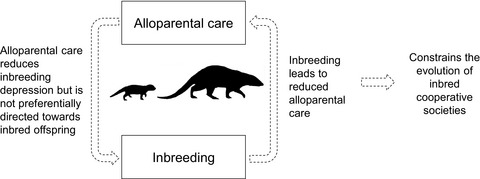
Theory predicts that inbreeding should favour the evolution of altruistic behaviours as long as the benefits of altruism are sufficient to mitigate inbreeding depression. Our study of wild banded mongooses finds that this expectation is partly fulfilled, in that alloparental care increases the survivorship of inbred pups, however the benefits of this system are curtailed by inbred individuals showing reduced caring behaviour. Such cross-generational effects may serve to magnify inbreeding depression and could help to explain why inbreeding is rare among species with alloparental care, despite theoretical predictions to the contrary.
Temporal stability vs. community matrix measures of stability and the role of weak interactions
- Pages: 1468-1478
- First Published: 18 August 2020
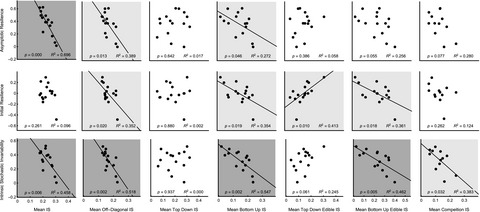
Understanding the multi-dimensionality of ecological stability is challenging because empiricists and theoreticians tend to measure different aspects and most studies only explore a single form of stability. Using time-series data from plankton communities, we compared measures of temporal stability (CVs) to measures of stability derived from the community matrix and the role of weak interactions as a stabilising mechanism using first-order multivariate autoregressive models (MAR). Weak interactions are important for some but not all forms of stability, and temporal stability and community matrix stability capture different aspects of stability reflecting the multi-dimensionality of stability.
Quantifying impacts of plastic debris on marine wildlife identifies ecological breakpoints
- Pages: 1479-1487
- First Published: 13 August 2020
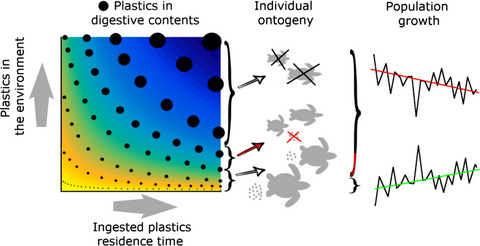
Quantifying harm caused to marine wildlife by plastic pollution is crucial for identifying ecologically relevant indicators and conservation strategies, with sublethal impacts being especially insidious because of their latent nature. Using loggerhead turtles as the target species, we present a novel methodology to quantify sublethal impacts of plastics ingestion, and show that reported plastics ingestion is unlikely to seriously impede sexual maturation and egg production of the turtles, but could still be causing population decline. The method is modular and readily applicable to other groups of species.
The effectiveness of flower strips and hedgerows on pest control, pollination services and crop yield: a quantitative synthesis
- Pages: 1488-1498
- First Published: 18 August 2020
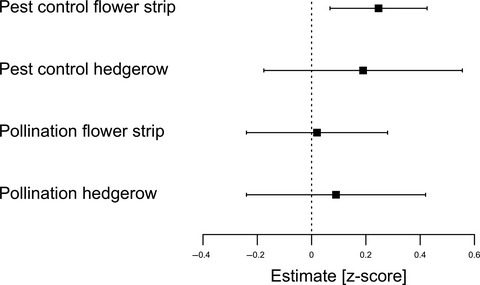
Our quantitative synthesis of the impacts of floral plantings on pest control, crop pollination and yield reveals that flower strips, but not hedgerows, enhanced pest control services in adjacent fields by 16% on average, while effects on crop pollination and yield were more variable. Our synthesis identifies several important drivers of this variability in effectiveness of plantings: pollination services declined exponentially with distance from plantings, and perennial and older flower strips with higher flowering plant diversity enhanced pollination more effectively, with important implications for the the design and implementation of these measures to effectively promote ecological intensification of agriculture in the future
Spatial covariance of herbivorous and predatory guilds of forest canopy arthropods along a latitudinal gradient
- Pages: 1499-1510
- First Published: 18 August 2020
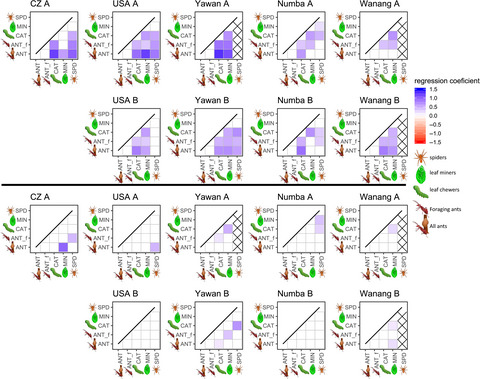
We developed a theoretical framework predicting various covariance patterns among herbivorous and predatory guilds. We censused abundances of two herbivore and two predatory guilds on > 1000 trees from nine 0.1-ha plots at various latitudes and altitudes. Our whole-forest censuses provide evidence for bottom-up limitation of arboreal arthropods by resources and abiotic factors, rather than competition and predation.
Methods
Structural forecasting of species persistence under changing environments
- Pages: 1511-1521
- First Published: 10 August 2020
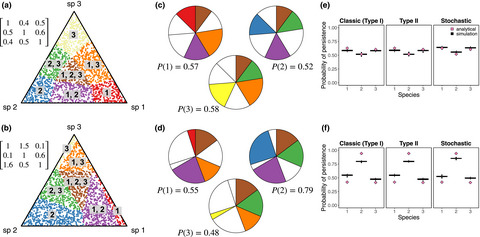
We propose a probabilistic approach rooted on the statistical concepts of ensemble theory applied to statistical mechanics and on the mathematical concepts of structural stability applied to population dynamics models – what we call structural forecasting. We show how this new approach allows us to estimate a probability of persistence for single species in local communities, to understand and interpret this probability conditional on the information we have concerning a system, and to provide out-of-sample predictions of species persistence as good as the best experimental approaches without the need of extensive amounts of data.
Reviews and Syntheses
Ecological impacts of human-induced animal behaviour change
- Pages: 1522-1536
- First Published: 24 July 2020
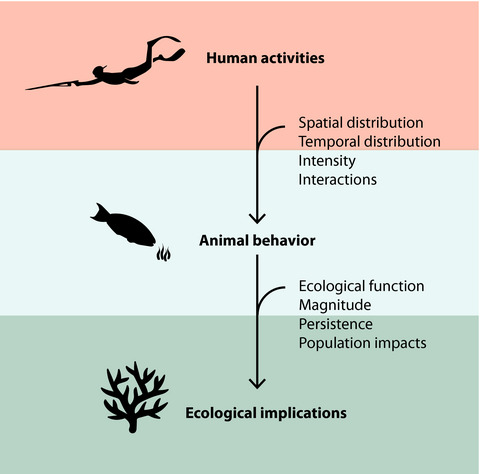
While animal behavior changes in response to human disturbances are increasingly documented, we have little understanding of if or how these changes may ultimately affect ecosystem processes. We synthesize literature and theory from natural and human-impacted systems to identify pathways in which human-induced animal behavior change may drive ecosystem consequences, as well as numerous factors that may dampen the realization of these pathways in certain contexts. We evaluate evidence for these pathways and show that while several empirical examples do exist, a shift in research priorities is needed to better understand the nature and prevalence of these pathways.
A meta-analysis of global avian survival across species and latitude
- Pages: 1537-1549
- First Published: 22 July 2020
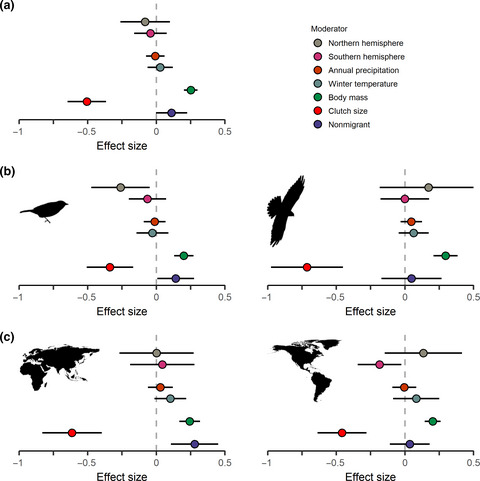
We synthesize data on avian survival rates from around the world to examine the hypothesis of latitudinal gradient in survival and explore whether these patterns can be explained using a combination of environmental climate factors and species intrinsic traits. We find evidence of a negative relationship between survival and latitude, but only in northern hemisphere passerines and birds from South America. These patterns are best accounted for by a considering a combination of species body mass and clutch size.
Technical Comments
Does acoustic priming ‘sweeten the pot’ of floral nectar?
- Pages: 1550-1552
- First Published: 23 June 2020
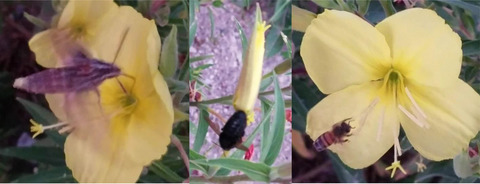
Diverse floral visitors to Oenothera elata (Arizona, USA) illustrate the problem of why enhanced nectar provision could be maladaptive should it occur in response to a broad spectrum of wingbeat frequency acoustic stimuli. Left: successful nectar access by hawkmoth pollinator; center: nectar robbing by carpenter bee; right: pollen theft by honey bee. Photos by R.A. Raguso.
Increased sugar concentration in response to a wide range of pollinator sounds can be adaptive for the plant: answer to Raguso et al
- Pages: 1553-1554
- First Published: 23 June 2020





